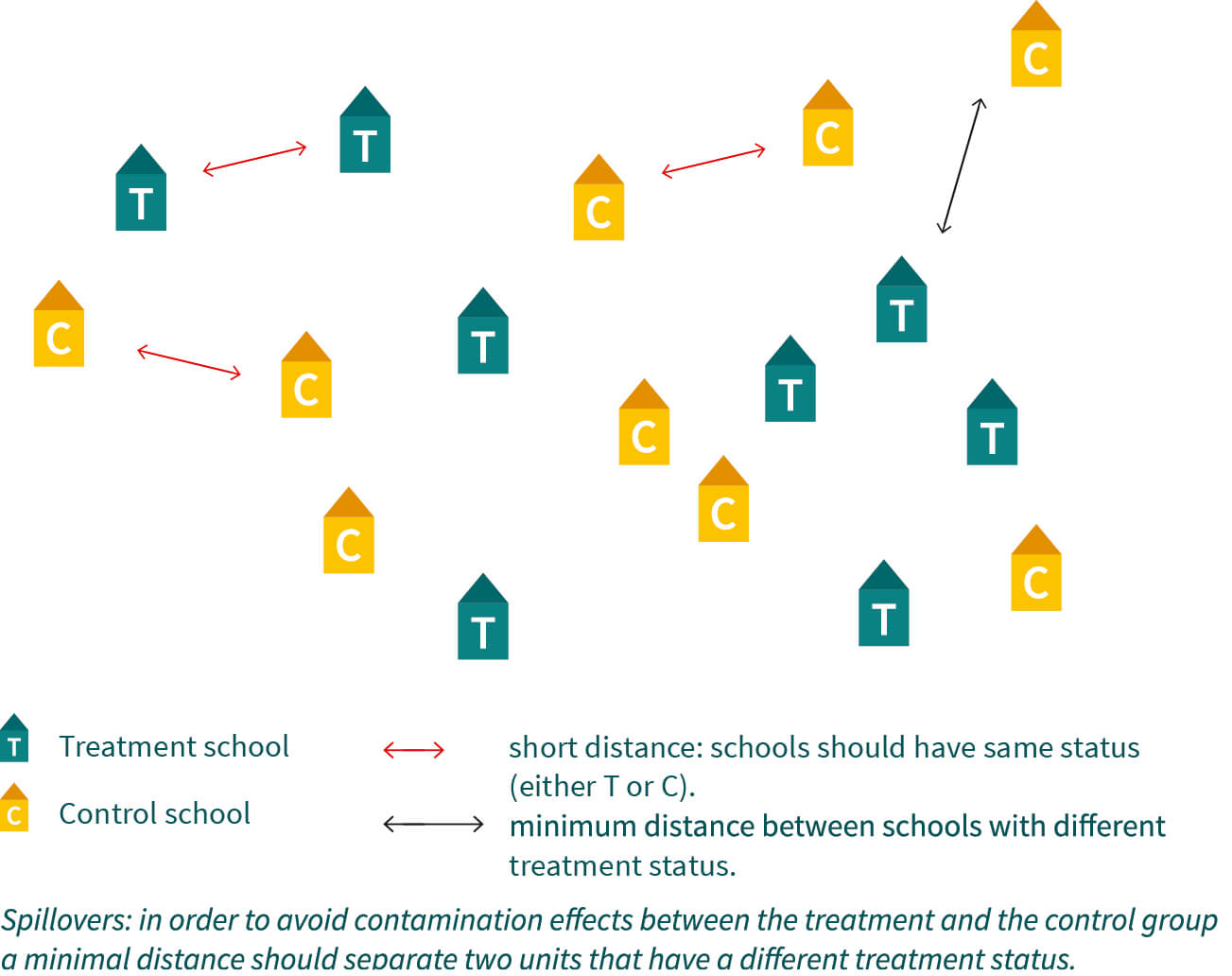In a phase-in design, the development program is implemented in stages. In the first years a limited number of households, villages, schools or health posts benefit from the program, with subsequent coverage increasing in the following years. This is a natural approach in the implementation of many development programs. A phase-in design presents the advantage that the control group is excluded from the program only temporarily. Delaying program roll-out in the control group even for just a short period of time (e.g. 2-3 years) is still very useful for allowing the implementation of an RCT and therewith drawing solid conclusions about the program’s impacts. A rotation design offers to switch program implementation between groups. For instance, in year 1, groups that were randomly selected as participants will receive the program, while control groups do not. In year 2, the program is implemented in the former control groups and no longer in the first group. For this design to produce unbiased estimates, however, absence of interaction between the cohorts is required.

